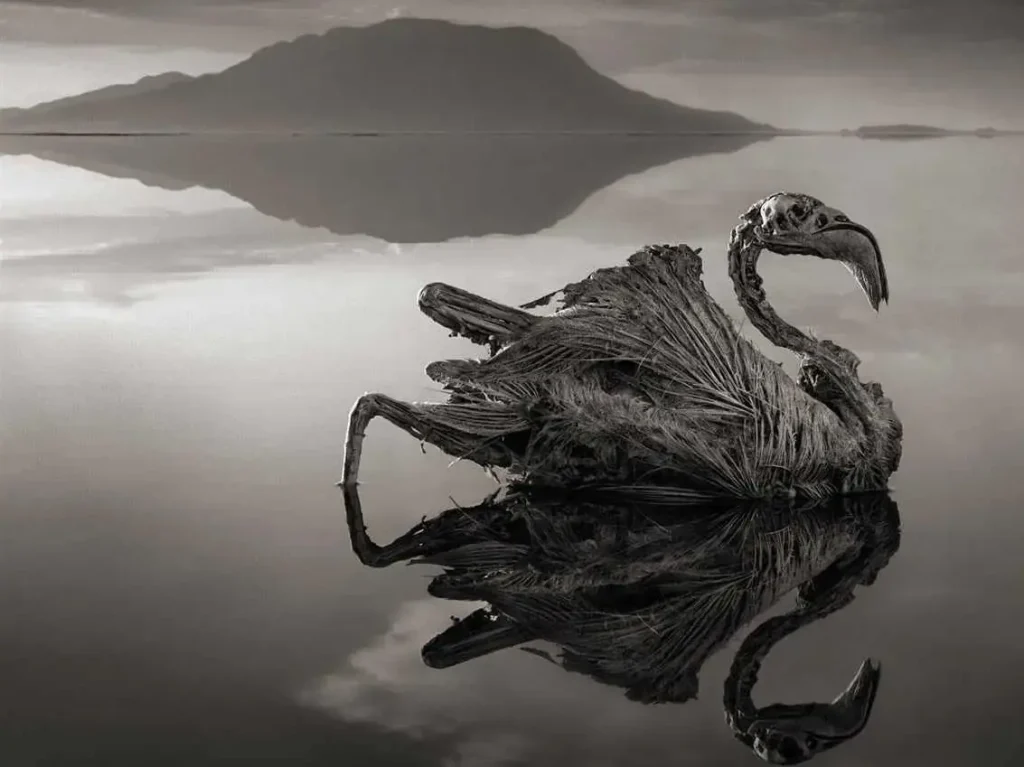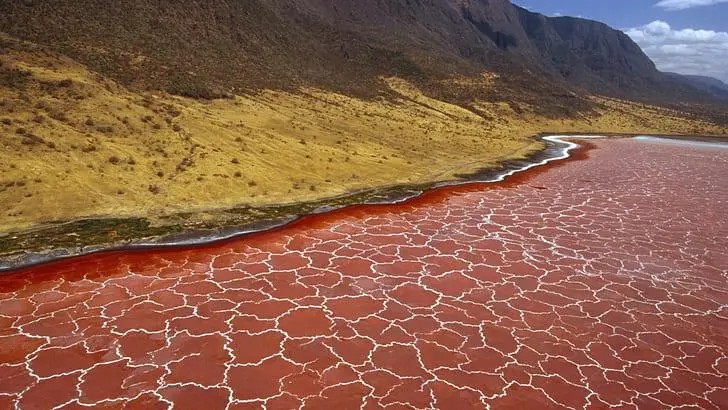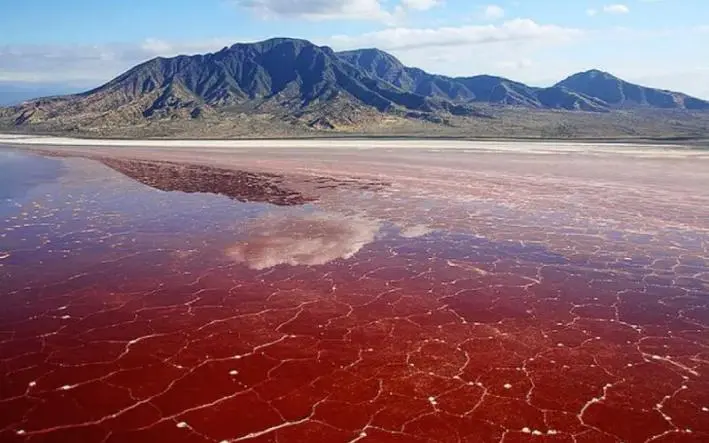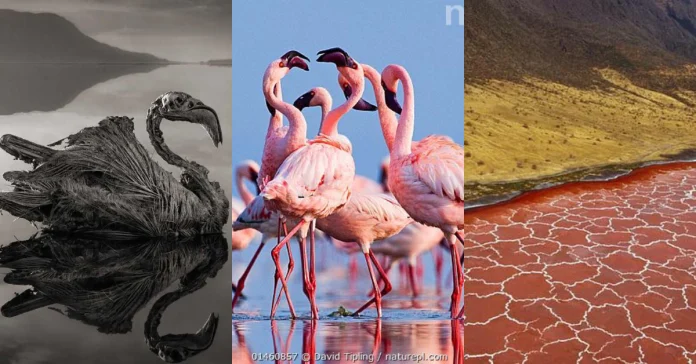‘The lake of death’ in northern Tanzania, Lake Natron is one of the most unusual and ghostly lakes on Earth. Its waters, fed by mineral-rich hot springs and rain runoff, contain high levels of sodium carbonate and other salts. This makes the lake highly alkaline, with a pH that can reach almost 12, comparable to ammonia.
But what truly sets Lake Natron apart is its ability to “petrify” animals. Birds and other small creatures that die in or near the lake are often preserved in an eerie, calcified state. The water’s high mineral content coats their bodies, creating what appear to be stone statues. Photographer Nick Brandt famously captured these calcified creatures, bringing attention to their haunting beauty.

The lake’s extreme environment is hostile to most wildlife, but it is a haven for the endangered lesser flamingo. These resilient birds breed here, thriving in the shallow, caustic waters. While Lake Natron’s petrifying effect on animals is a natural phenomenon, it adds an almost mythical quality to this African lake, where life and death coexist in stark, surreal beauty.

Swimming in Lake Natron is not recommended due to its extreme conditions. It has very high levels of salt and alkalinity, with water temperatures that can reach up to 60°C (140°F). The pH levels are nearly as high as ammonia, making the water corrosive. These factors make it inhospitable to most life forms, except for some species like flamingos and specialized microorganisms. Therefore, while Lake Natron is visually striking, it is unsafe for swimming.
This lake stands as a reminder of nature’s power, where even death is transformed into a work of art.



Photo taken by The Photographer Nick Brandt

